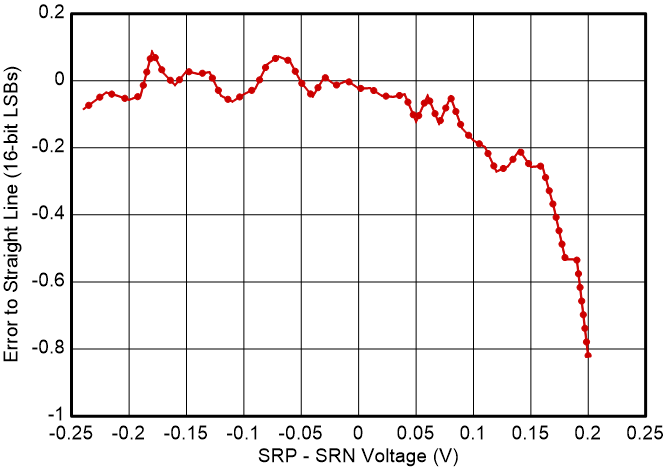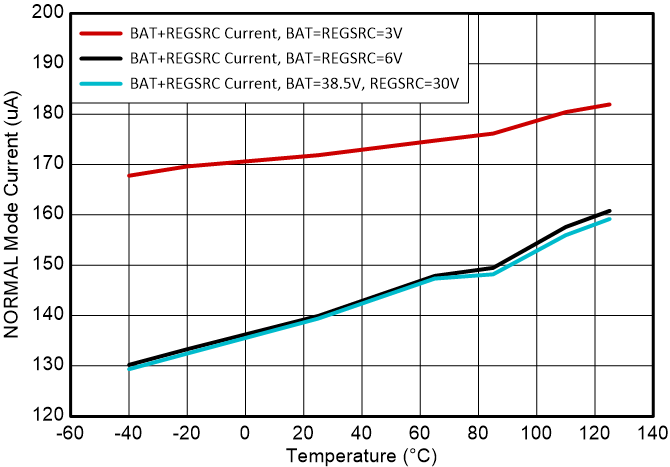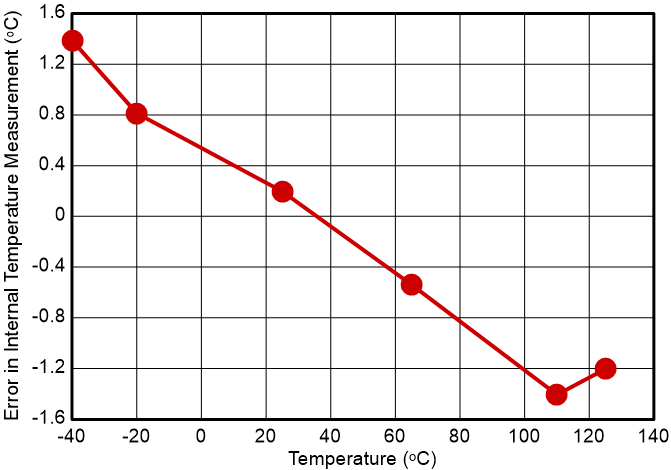JAJSS72 November 2023 BQ76907
PRODUCTION DATA
- 1
- 1 特長
- 2 アプリケーション
- 3 概要
- 4 Device Comparison Table
- 5 Pin Configuration and Functions
-
6 Specifications
- 6.1 Absolute Maximum Ratings
- 6.2 ESD Ratings
- 6.3 Recommended Operating Conditions
- 6.4 Thermal Information bq76907
- 6.5 Supply Current
- 6.6 Digital I/O
- 6.7 REGOUT LDO
- 6.8 Voltage References
- 6.9 Coulomb Counter
- 6.10 Coulomb Counter Digital Filter
- 6.11 Current Wake Detector
- 6.12 Analog-to-Digital Converter
- 6.13 Cell Balancing
- 6.14 Internal Temperature Sensor
- 6.15 Thermistor Measurement
- 6.16 Hardware Overtemperature Detector
- 6.17 Internal Oscillator
- 6.18 Charge and Discharge FET Drivers
- 6.19 Comparator-Based Protection Subsystem
- 6.20 Timing Requirements - I2C Interface, 100kHz Mode
- 6.21 Timing Requirements - I2C Interface, 400kHz Mode
- 6.22 Timing Diagram
- 6.23 Typical Characteristics
- 7 Detailed Description
- 8 Application and Implementation
- 9 Power Supply Recommendations
- 10Layout
- 11Device and Documentation Support
- 12Revision History
- 13Introduction to Mechanical, Packaging, and Orderable Information
パッケージ・オプション
メカニカル・データ(パッケージ|ピン)
- RGR|20
サーマルパッド・メカニカル・データ
- RGR|20
発注情報
6.23 Typical Characteristics













When REGSRC = 3 V, REGSRC
current increases as the device attempts to raise the REGOUT voltage to its target 3.3
V.
Figure 6-26 Supply Current in NORMAL Mode vs. Temperature









LFO measured in full
speed mode (262 kHz) and low speed mode (32.77 kHz)
Figure 6-19 Low Frequency
Oscillator (LFO) Accuracy vs. Temperature

Data
is
collected with
a
1.5-V differential input on cell.
Figure 6-23 Cell Balancing Resistance vs. Temperature

No communications, REGOUT
disabled
Figure 6-27 Supply Current in SLEEP Mode
vs.
Temperature